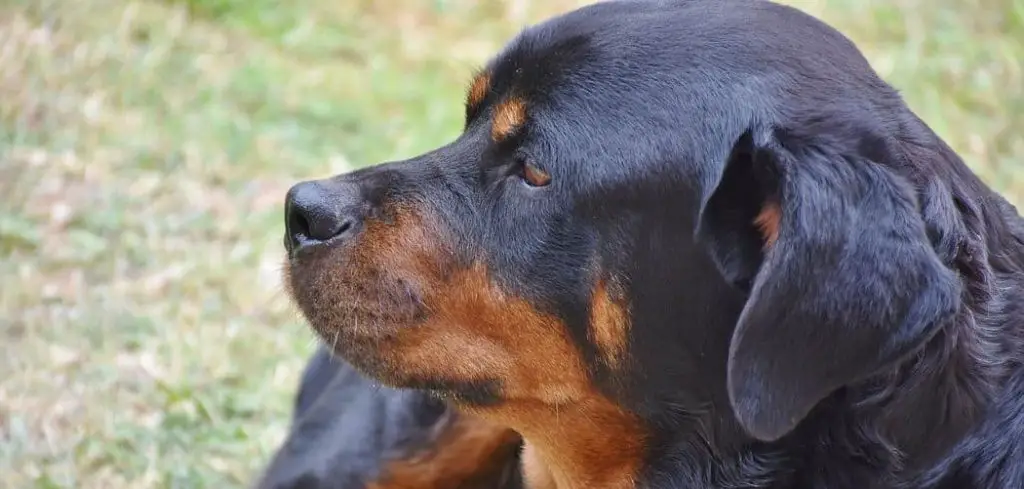Dogs that lick excessively and whine at the same time can leave their owners feeling both worried and confused. These behaviors may seem minor at first but can actually point to underlying physical or emotional issues.
We outline the common reasons why a dog may excessively lick and whine, what you can do at home, and when to seek veterinary help.
Dog Excessively Licking and Whining — Why It Happens
Excessive licking and whining in dogs often happen together because they are linked to discomfort, anxiety, or underlying medical issues. A dog may lick when in pain or stressed, and whining is their way of communicating distress. Common causes include anxiety, gastrointestinal upset, skin irritations, dental problems, or even pain from joint issues.
Sometimes, the combination signals emotional distress rather than illness, but in many cases, it is the body’s way of telling us something is wrong and needs attention.

Dog Excessively Licking and Whining: Common Causes
Anxiety and Stress
Anxiety is one of the most common causes of both licking and whining in dogs. When dogs are stressed, they may resort to self-soothing behaviors like licking their paws, objects, or even the air. Whining often accompanies this, serving as a vocal signal of unease.
Separation anxiety, changes in routine, or loud noises such as fireworks can all trigger these behaviors. While occasional stress reactions are normal, frequent licking paired with whining indicates a deeper emotional struggle that may require professional help.
Read more: Dog Excessive Licking and Coughing (What it could mean)
Gastrointestinal Upset
Digestive discomfort can also lead to these symptoms. Dogs with nausea, acid reflux, or gastrointestinal irritation often lick excessively in an attempt to relieve the queasy feeling. The whining is a sign of distress caused by the discomfort.
Owners may also notice drooling, lack of appetite, or attempts to eat grass. Since gastrointestinal issues range from mild indigestion to serious conditions like pancreatitis, it’s important not to ignore these signals.
Pain or Joint Problems
Pain—whether from arthritis, an injury, or another underlying condition—can trigger both licking and whining. Dogs often lick painful areas as a form of self-comfort. For example, a dog with sore hips may lick its legs or joints repeatedly.
Whining is a vocal expression of discomfort, often becoming more noticeable when the dog moves or is touched near the sore spot. Chronic pain should never be overlooked, especially in aging dogs.
Skin Allergies or Irritations
Skin issues are another major cause of licking and whining. Dogs with allergies, flea bites, or skin infections may lick irritated areas obsessively. The constant licking is an attempt to relieve itchiness, but it often worsens the irritation.
Whining occurs when the itch becomes unbearable or painful. Owners may also see redness, hair loss, or hot spots. Left untreated, skin conditions can escalate quickly, leading to infections.
Dental Problems
Oral discomfort is a less obvious but important cause. Dogs with dental disease, broken teeth, or gum inflammation may lick their lips and paws while whining. This behavior often worsens around mealtimes when eating becomes painful.
Other signs may include bad breath, pawing at the mouth, or reluctance to chew toys. Dental disease can affect overall health, so early intervention is crucial.
Neurological Issues
In some cases, neurological conditions can trigger compulsive licking and whining. Disorders such as cognitive dysfunction in older dogs or compulsive disorder in younger ones may cause repetitive behaviors that seem out of context.
These cases are less common but should be considered if other medical or behavioral causes are ruled out.
What to Do If Your Dog Is Excessively Licking and Whining
If your dog is showing these symptoms, the first step is to stay calm and observe carefully.
Note when the behaviors occur, whether they worsen at certain times, and if there are any additional symptoms like vomiting, limping, or skin irritation.
At home, you can make your dog more comfortable by reducing stress triggers. Provide a quiet, safe space during noisy events, maintain a consistent routine, and use enrichment toys to redirect anxious energy.
If skin irritation is suspected, gentle cleaning with vet-approved wipes may help temporarily.
For digestive discomfort, withholding food for a few hours and then offering a bland diet (boiled chicken and rice) can sometimes ease mild upset.
However, this should not replace veterinary care if symptoms persist. Similarly, dogs with signs of dental pain or arthritis should not be given over-the-counter medications, as many human drugs are toxic to dogs.
Above all, pay close attention to the persistence and severity of symptoms. If licking and whining continue beyond a day or two, veterinary input is necessary.
When to Call or Visit Your Vet
You should contact your veterinarian promptly if the licking and whining are constant or accompanied by other concerning symptoms such as vomiting, diarrhea, limping, visible wounds, or refusal to eat.
Seek immediate veterinary help if your dog appears to be in severe pain, has swelling in the mouth or body, or shows neurological symptoms like confusion or unsteady walking.
Persistent skin problems, especially if raw spots or bleeding are present, also require veterinary attention.
For cases linked to anxiety, a vet may recommend behavioral strategies, calming aids, or referral to a professional trainer or behaviorist.
Read more: Dog licking excessively (Discover what it might mean)
Key Takeaway
Excessive licking and whining in dogs should not be dismissed as simply quirky behavior. These signs often point to discomfort, stress, or an underlying health issue that needs attention.
While small stress-related episodes can sometimes be managed at home, persistent or severe symptoms require veterinary evaluation. The sooner the cause is identified, the sooner your dog can feel comfortable again.
Your attentiveness and care can make all the difference in keeping your dog happy, healthy, and free from distress.
